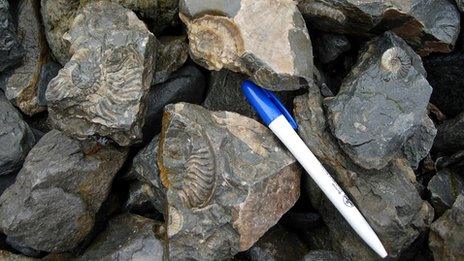'Reckless hunters' threaten Dinosaur Isle fossils
- Published
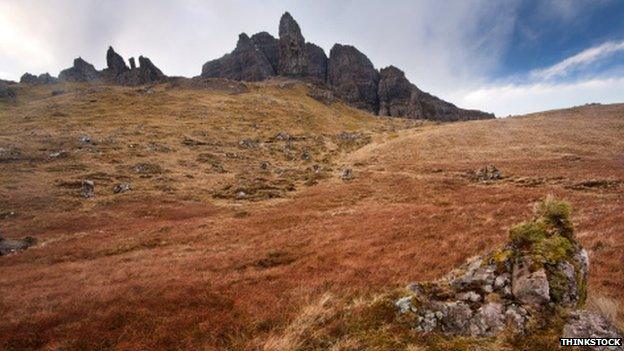
Volunteers are wanted to rescue, record and safeguard sites on Skye
People living on Skye have been asked to help protect the island's fossils from "reckless hunters".
The island has been dubbed "Dinosaur Isle" because of its rich heritage of fossils, many from the Jurassic period.
Volunteers will be sought to help to rescue, record and safeguard sites on the island's coast.
In 2011, tonnes of rock were disturbed at a Jurassic site in what has been described as one of Scotland's most reckless acts of fossil collecting.
Rock was dug away from cliffs near Bearreraig Bay in an apparent organised search for valuable specimens.
Scottish Natural Heritage (SNH), Highland Council, National Museums Scotland and Glasgow's Hunterian Museum held a public event at Tigh na Sgire in Portree on Tuesday.
At the meeting, people were asked to become voluntary wardens.
A similar initiative will seek to protect fossils and geology on the nearby small island of Raasay.

Fossils were smashed in 2011 by collectors thought to be hunting for more valuable specimens
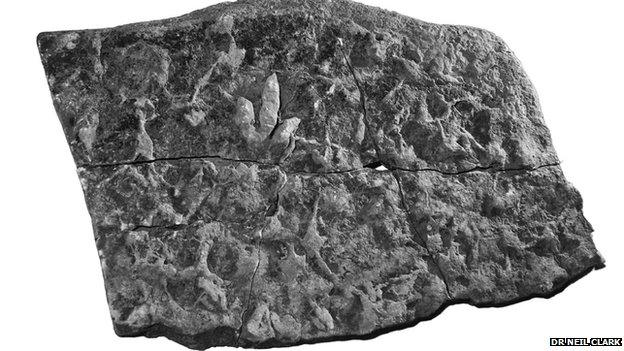
Dinosaur footprints have been found on Skye
SNH geologist Dr Colin MacFadyen said fossils could be collected responsibly in line with the Scottish Fossil Code, external.
He said: "Skye and Raasay have a fantastic fossil heritage, and kids and amateur fossil hunters should be encouraged to collect.
"But at the same time something has to be done about irresponsible collecting and to reduce examples where people, for whatever reasons, damage fossil localities and important fossils.
"This is where the local community can get involved and help secure their threatened natural heritage. Local action may ensure that rare fossil finds are rescued, recorded and saved for the nation."
He said the Portree meeting would encourage local people to "play an important part in safeguarding and promoting an internationally significant asset".
Dr Nick Fraser, keeper of natural sciences at National Museums Scotland, said: "We are excited by the opportunities to work together to bring Skye's remarkable fossil heritage into greater prominence.
"This is a precious resource which, with support from the wider community, will benefit generations of islanders."
Dr Neil Clark, of the Hunterian Museum at the University of Glasgow, said Skye's internationally important fossils included "very rare" dinosaur remains.
He added: "Skye is the only place in Scotland from which dinosaurs have been found and has more than 10% of the world's Middle Jurassic dinosaur species and more than 15% of the Middle Jurassic dinosaur sites.
"It is important that we look after and properly document these rare and globally significant fossil remains for future generations to study and enjoy."
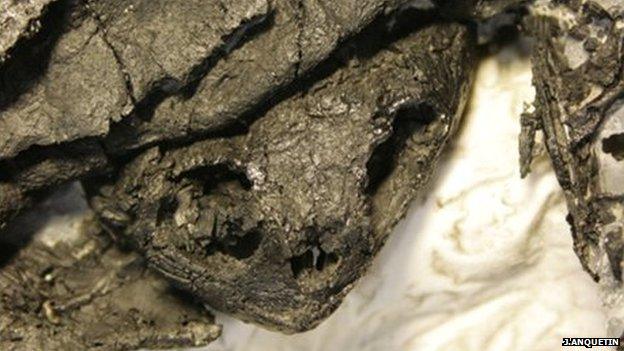
The 164 million-year-old fossils of early turtles have been found on Skye
In 2008, scientists revealed that the earliest turtles known to live in water had been discovered on Skye.
The 164 million-year-old reptile fossils were found on a beach at Cladach a'Ghlinne, on the Strathaird peninsula in southern Skye.
The new species formed a missing link between ancient terrestrial turtles and their modern, aquatic descendants.
The discovery of Eileanchelys waldmani, which translates as "the turtle from the island", was reported in the Royal Society journals.
Evidence of dinosaurs and ancient large reptiles from other periods have also been found on the island.
The fossils include more than 100 marks left by a lizard called Isochirotherium - also known as the hand-beast - 270 million years ago.
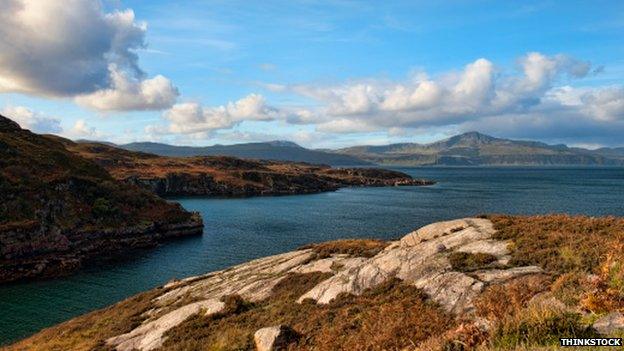
The public will also be asked to help protect the geology of Raasay
Skye also provides Scotland with an ancient link to Australia.
Palaeontologists have used dinosaur footprints found at Valtos on Skye to help explain what happened at the Dinosaur Stampede National Monument in central Queensland.
The monument is a former quarry where, since the 1960s, as many as 4,000 dinosaur footprints have been uncovered.
In 1984, the tracks were identified by scientists as being the result of small creatures fleeing from a larger animal, possibly a predator similar to the Tyrannosaurus rex, about 95 million years ago.
Others suggests the tracks were left by dinosaurs on their tiptoes as they waded through water.
- Published28 September 2013
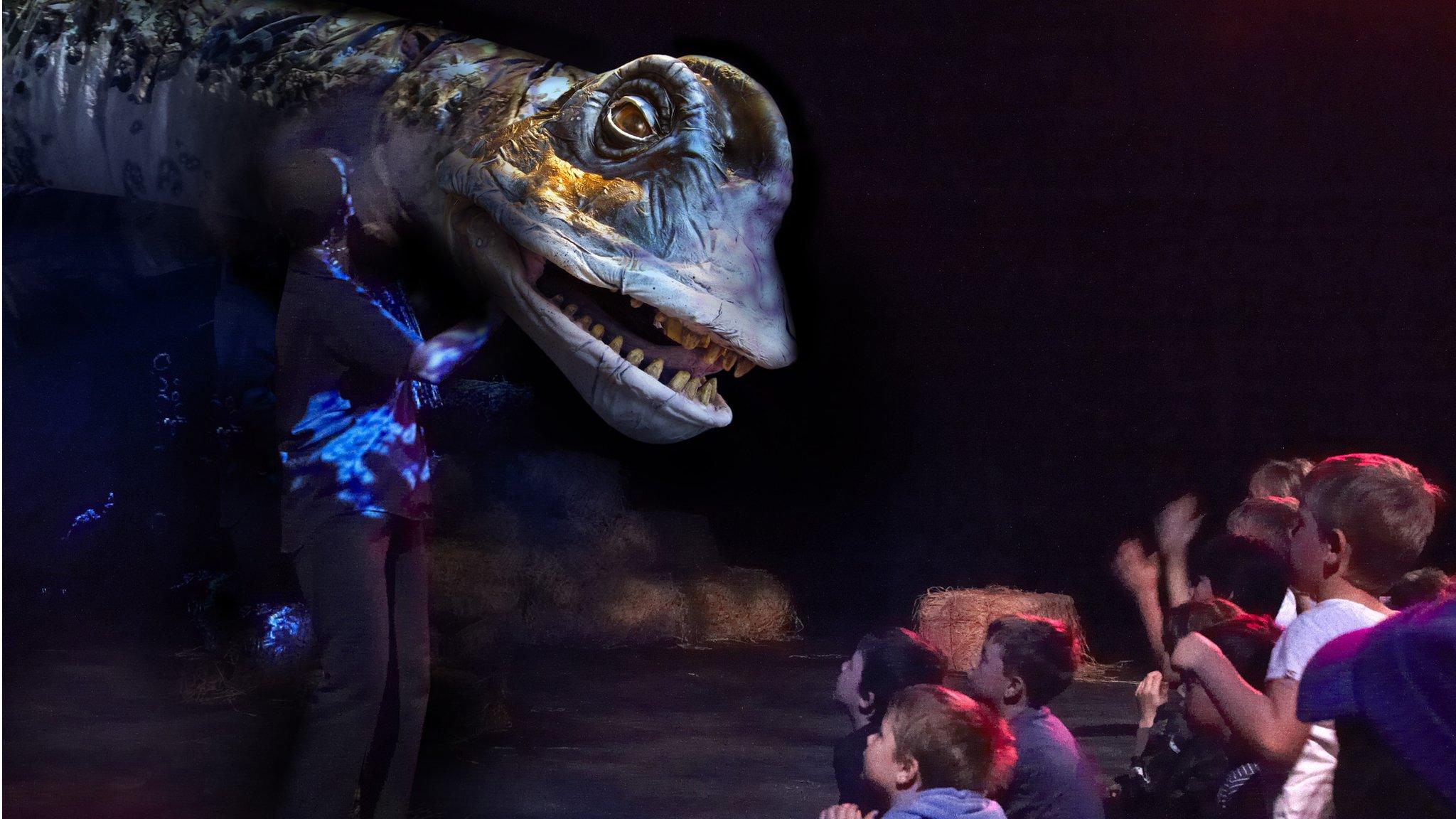
- Published27 July 2012
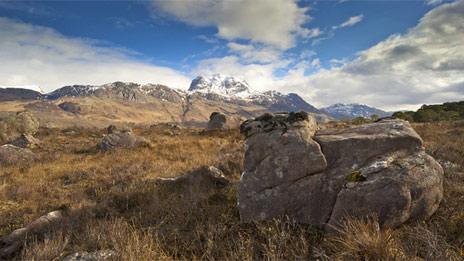
- Published18 November 2011
